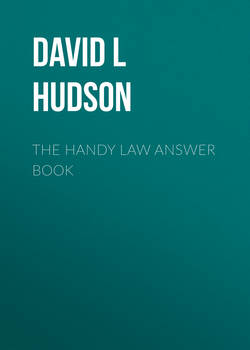Читать книгу The Handy Law Answer Book - David L Hudson - Страница 28
На сайте Литреса книга снята с продажи.
How did the battle between the Federalists and Anti-Federalists conclude?
ОглавлениеThe battle between the Federalists and Anti-Federalists was intense. However, the Federalists possessed advantages. They enjoyed most of the media support. The large newspapers from Boston, New York and Philadelphia took up the Federalist cause. They also seemed to have the best ammunition—the detailed document known as the Constitution. Though the Anti-Federalists made many arguments against provisions of the Constitution, they did not have their own document. The Anti-Federalists could only criticize the new document.
However, the Anti-Federalists seized upon the lack of a bill of rights as a prime weapon in the ratification battles. Delaware became the first state to ratify the Constitution and it did so unanimously on December 7, 1787. Then, an intense battle began in Pennsylvania. James Wilson took the lead in defending the Constitution in his home state.
In a well-known address delivered on October 6, 1787, Wilson argued that the inclusion of a bill of rights was “superfluous and absurd.” The new Congress, Wilson argued, “possesses no influence whatever upon the press.” Wilson pointed out that many Anti-Federalists were criticizing the new document because it provided for a standing army. Wilson responded: “Yet I do not know a nation in the world, which has not found it necessary and useful to maintain the appearance of strength in a season of the most profound tranquility.”
The state assembly had to vote on a state convention. Many of the Anti-Federalists in the state legislature refused to attend the assembly. They did not want the Assembly to have a quorum, or a sufficient number of members to take a valid vote. Allegedly, a mob of people broke into a local home and dragged two Anti-Federalists to the Assembly floor in order to create a quorum. The delegates voted 45 to 2 in favor of a ratification convention. The state convention met for five weeks. Finally, on December 12, 1787, the delegates voted for ratification by a vote of 46 to 23. The vote upset some citizens with Anti-Federalists’s sympathies. A mob of such people attacked James Wilson in Carlisle, Pennsylvania. The Pennsylvania delegates also considered fifteen amendments proposed by Anti-Federalist Robert Whitehill. These proposed amendments were similar to what would later become the U.S. Bill of Rights.
